Track and signal panel, Greymouth, September 1992
On the lever frame, which looks like a Saxby & Farmer frame to me, there were 32 levers, but 16 of them were unused spares, i.e. not (or most probably not longer) in use:
Lever frame, Greymouth, September 1992
The signals, although operated by levers, were colour light signals throughout, and the points were also electrically operated, as can be seen at the cut-off lever handles. Even with regard to the locks, such interlockings often raise the question of whether they are mechanically or electrically established—I don't know about this interlocking, but in southern England I have seen lever frames that provided all the locking logic electrically via lever locks: I'd like to call such a construction "mechano-electrical" and postulate that Greymouth was nearly such a beast (but I will try to find out what was really still mechanical here). Here are some details of the lever frame:
Levers 1 to 6, Greymouth, September 1992
Levers 21 to 26, Greymouth, September 1992
Levers 24 to 32, Greymouth, September 1992
Above the levers, there was the track board already shown above:
Track and signal panel, Greymouth, September 1992
Here, at the top right, you can see the red indication of the returning Tranz-Alpine train set, which will later take us back to Christchurch (without any photos taken by me):
Track and signal panel, Greymouth, September 1992
From the outside, the signal box looked like this (and still looks like this—the building is apparently still standing):
Signal box, Greymouth, September 1992
In this picture, looking north, you can see an inner starter on the right, an outer starter far out on the left, and the upper part of the supporting structure of the old Cobden Bridge directly to the right of the signal box building. Unfortunately, I didn't take a single picture of that bridge, because I didn't bother to see what else was interesting nearby:
Signal box, Greymouth, September 1992
The last picture from Greymouth is the inner starter:
Starting signal 15, Greymouth, September 1992
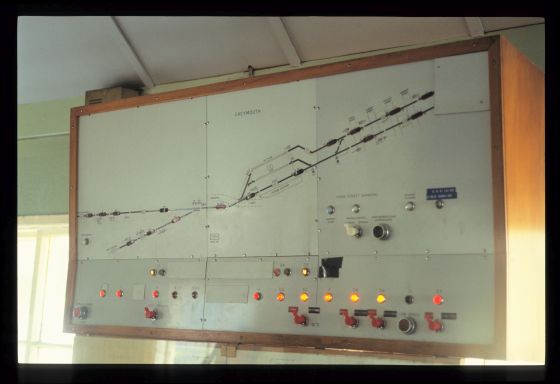
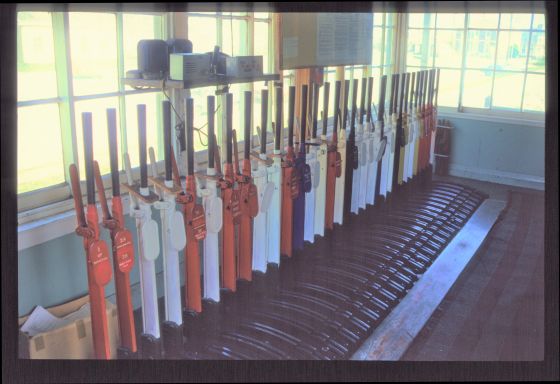
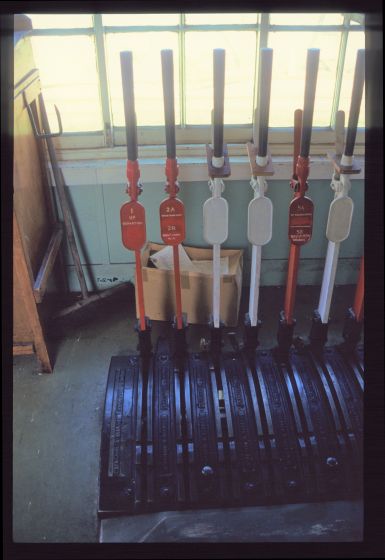

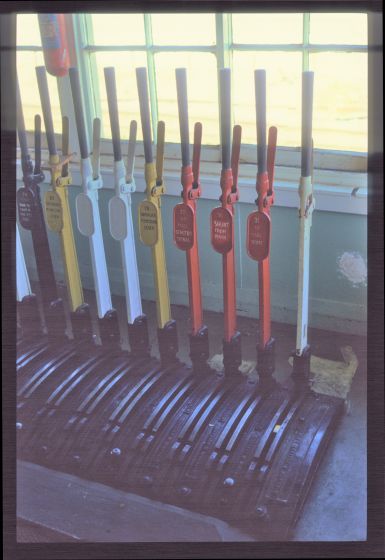
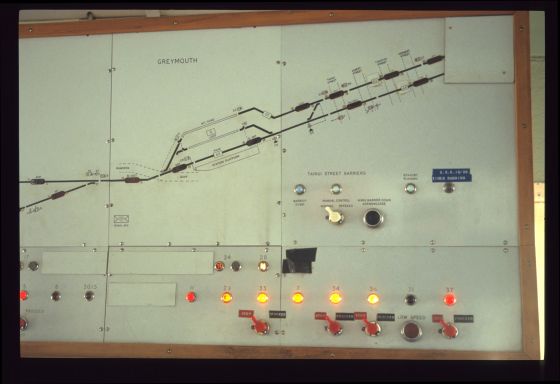
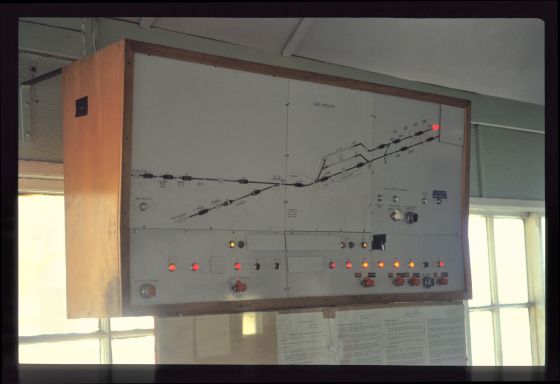
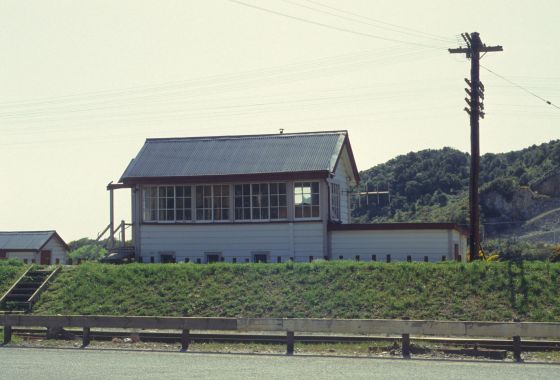
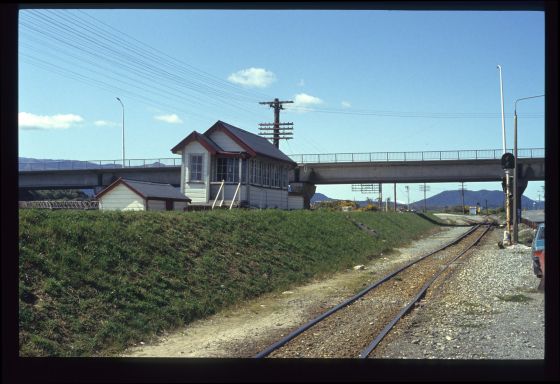
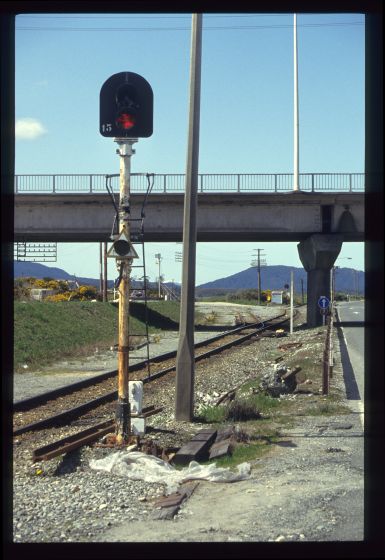
It's a No 14 Pattern frame McKenzie & Holland frame (as were all NZ mechanical frames over about 10 levers). When you took the photos the locking would have been mechanical. It's classified as an indirect lever locking frame. The actual locking is tappet locking. The tappets are driven by the movement of the lever, with a cam mechanism reducing the travel of the lever at the take-off point to something suitable for the tappet locking. Indirect lever locking frames were something of a speciality with McKenzie & Holland.
ReplyDeleteThe signal box was brought into use in 1904 and taken out of use around December 1992.